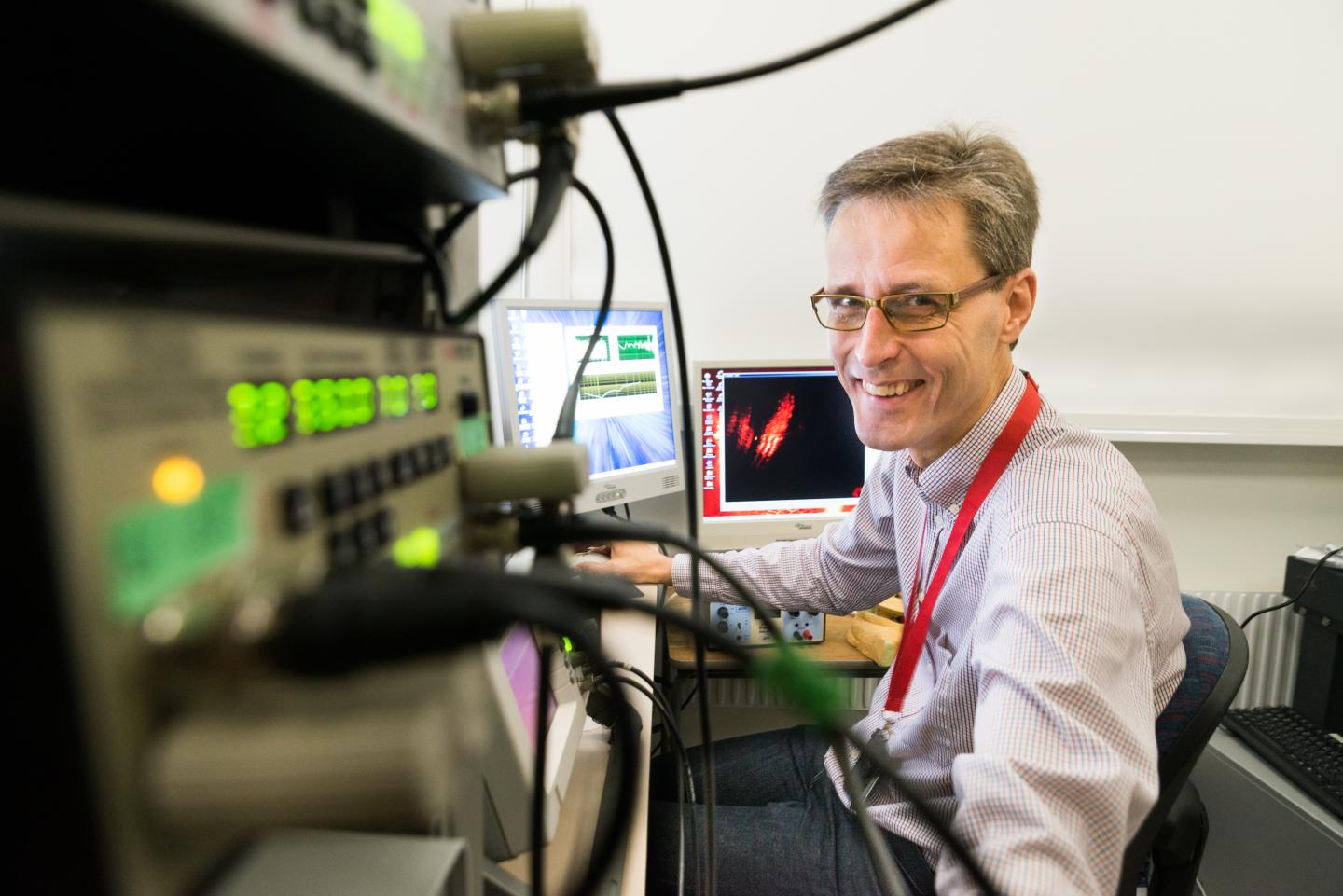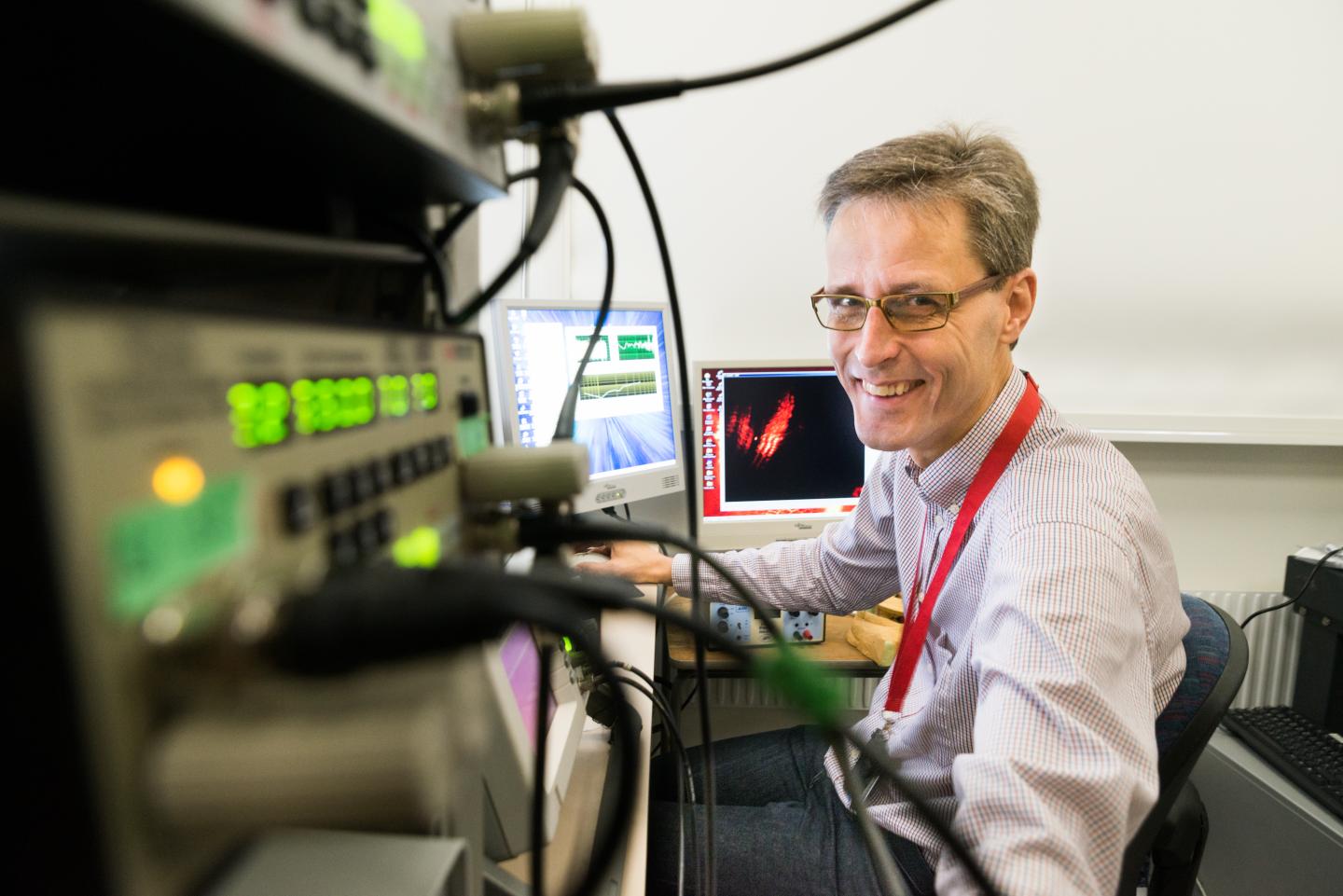
Credit: Thor Balkhed/Linköping University
Results from a research study published in Nature Communications show how the inner ear processes speech, something that has until now been unknown. The authors of the report include researchers from Linköping University, Sweden, and Oregon Health & Science University, United States.
A collaboration between researchers in the U.S., Sweden, Denmark, the U.K. and India has now revealed how the inner ear processes speech. The discovery is an important addition to our understanding of how the inner ear and our sense of hearing function. The results have been presented in an article published in the scientific journal Nature Communications.
"The sound of speech has two components in the inner ear. One component consists of high frequency variations in the speech sound. The other component, known as the 'envelope', describes the outermost pattern of the speech sound", says Anders Fridberger, professor of neuroscience at Linköping University, and one of two principal authors of the article.
The envelope, which varies relatively slowly, can be considered as the overall structure of the speech signal. Researchers have previously shown that the envelope is most important for understanding what someone is saying. Until now, the way the inner ear decodes the envelope of the speech signals has remained elusive.
The inner ear produces tiny electrical currents whenever sound enters – it converts sound to electrical impulses. These are led through the auditory nerve to the brain. By placing small electrodes into the ear canal of experimental subjects, and placing electrodes close to the cochlea of patients who have undergone surgery, the researchers have been able to record the way in which the inner ear codes speech-like sound.
"Our study shows how the inner ear separates out the slow, speech-important component for subsequent transfer to the brain", says Alfred Nuttall, professor of otolaryngology at Oregon Health & Science University and director of the Oregon Hearing Research Center.
The results have led the researchers to the understanding that speech gives rise to a particular form of electrical signals sent to the brain. These signals differ from those that arise in response to other forms of sound.
"It is remarkable that the coding of speech information relies on certain unique biophysical properties of the specialised inner ear cells that detect sound.", says Alfred Nuttall.
The discovery is an important addition to our understanding of how the inner ear functions. The inner ear is embedded in the thick bone of the skull, which makes it difficult to access and study it. Thus, diagnosing the exact location of damage to the inner ear is currently difficult.
"We believe that our results will improve diagnostic procedures for various hearing impairments, something that is sorely needed. Much remains to be done, however", says Anders Fridberger.
###
The study was supported by National Institute on Deafness and Other Communication Disorders, NIH-NIDCD and the Swedish Research Council, Torsten Söderberg foundation, Strategic research area for systems neurobiology (Östergötland county), Linköping University.
The article: "A mechanoelectrical mechanism for detection of sound envelopes in the hearing organ", Alfred Nuttal, Anthony J Ricci, George Burwood, James M Harte, Stefan Stenfelt, Per Cayé-Thomasen, Tianying Ren, Sripriya Ramamoorthy, Yuan Zhang, Teresa Wilson, Thomas Lunner, Brian C J Moore and Anders Fridberger, (2018), Nature Communications, published online October 9 2018, doi: 10.1038/s41467-018-06725-w
For more information, please contact:
Anders Fridberger, professor, [email protected], +46 13 282815
Media Contact
Karin Söderlund Leifler
[email protected]
461-328-1395
@liu_universitet
http://www.liu.se
Original Source
https://liu.se/en/news-item/upptackt-om-innerorats-funktion-kan-forbattra-diagnostik-for-horselskadade http://dx.doi.org/10.1038/s41467-018-06725-w





